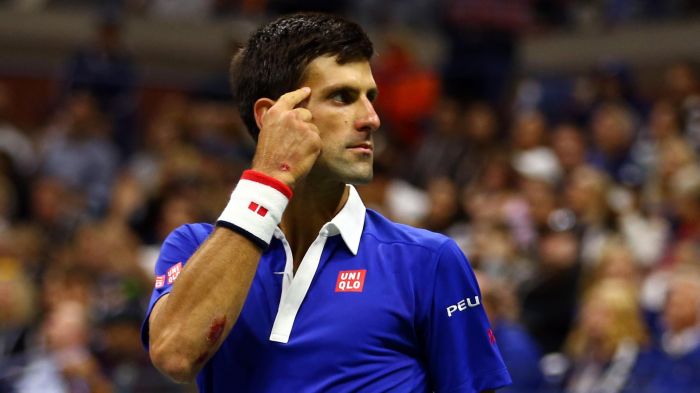The purpose of the 4C concept is to help the player acquire the right mindset for training and competition.
4C stands for concentration, confidence,competitiveness and calmness. The combination of these 4 pillars will give your pupil's mental toughness a serious boost.
4C stands for concentration, confidence,competitiveness and calmness. The combination of these 4 pillars will give your pupil's mental toughness a serious boost.
Concentration
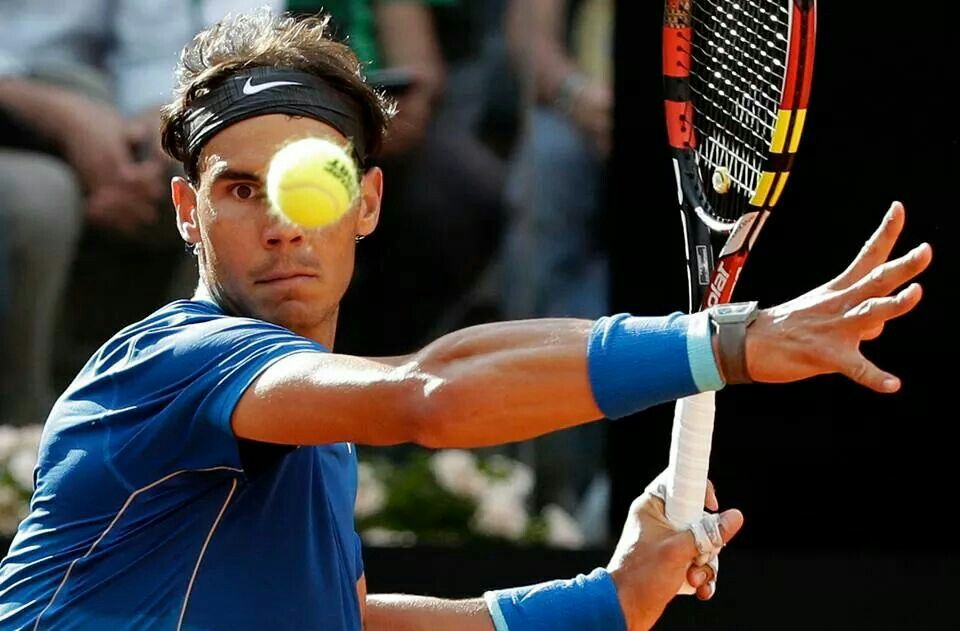
Concentration should never be a vague concept. Concentration must always be related to something, meaning that we must concentrate our attention on something.
In tennis, it's no different. A player can focus on anything related to the game, be it the ball itself, footwork, generating top spin, following through, remaining calm, tactical planning, so on and so forth. So many things to potentially concentrate on means it will be impossible to track them all at once. As a matter of fact, studies showed that we can't really focus on more than one or two things at the same time. Even two things at once has proven to be challenging.
This is why it is crucial to acquire and work on improving the ability to make the right choice when selecting what to concentrate on at any given moment. The rule of thumb here is to be aware of what needs immediate attention at any given moment, be it looking at the ball with more intensity, moving your feet more, brushing the ball more, positioning your body better..etc? If a player can identify the weakness, then he or she will be able to address it. This identification/adjustment process is very dynamic in nature since weak links keep on changing from one point/rally to another. Therefore, staying in tune with your own game is is of paramount importance in order to get oneself back on track as quickly as possible..
For beginner and intermediate players, identifying weaknesses is not easy, but the coach can and will point that out whenever necessary. Even advanced players can be sometimes at a loss and completely miss the actual culprit. Good news is that this crucial skill can be improved through consistent communication with the coach. One of my favorite ways to work on it is to let the student shout out what they thought was the reason they missed their last shot. The coach can then either confirm or mention something else.
In tennis, it's no different. A player can focus on anything related to the game, be it the ball itself, footwork, generating top spin, following through, remaining calm, tactical planning, so on and so forth. So many things to potentially concentrate on means it will be impossible to track them all at once. As a matter of fact, studies showed that we can't really focus on more than one or two things at the same time. Even two things at once has proven to be challenging.
This is why it is crucial to acquire and work on improving the ability to make the right choice when selecting what to concentrate on at any given moment. The rule of thumb here is to be aware of what needs immediate attention at any given moment, be it looking at the ball with more intensity, moving your feet more, brushing the ball more, positioning your body better..etc? If a player can identify the weakness, then he or she will be able to address it. This identification/adjustment process is very dynamic in nature since weak links keep on changing from one point/rally to another. Therefore, staying in tune with your own game is is of paramount importance in order to get oneself back on track as quickly as possible..
For beginner and intermediate players, identifying weaknesses is not easy, but the coach can and will point that out whenever necessary. Even advanced players can be sometimes at a loss and completely miss the actual culprit. Good news is that this crucial skill can be improved through consistent communication with the coach. One of my favorite ways to work on it is to let the student shout out what they thought was the reason they missed their last shot. The coach can then either confirm or mention something else.
Confidence
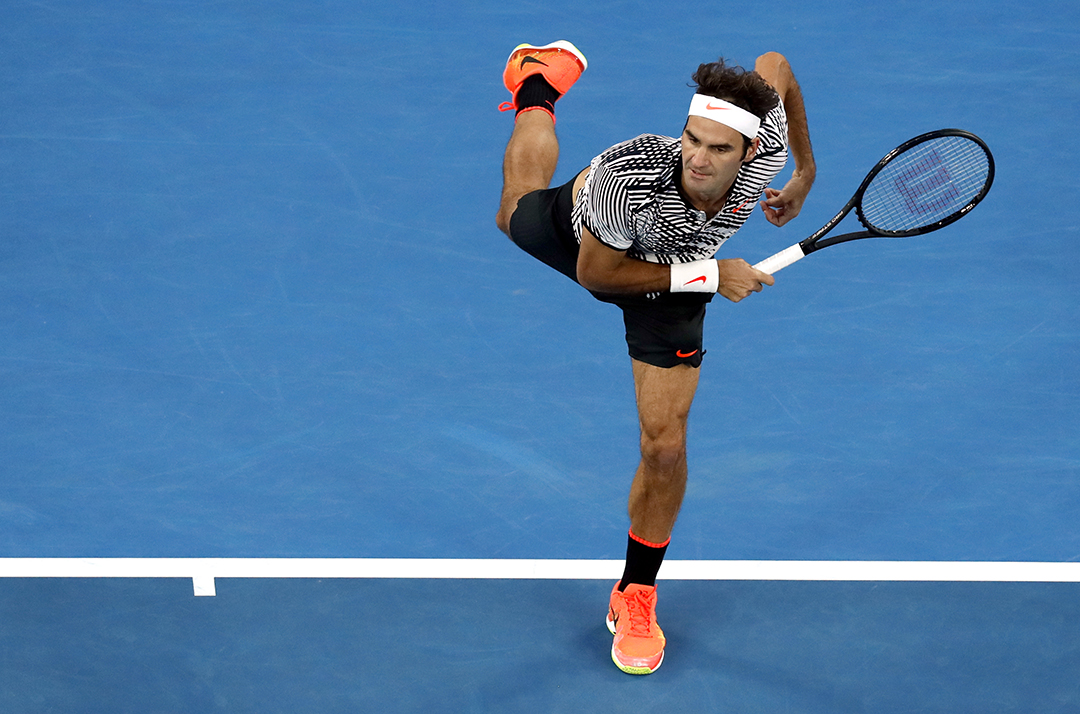
Doubts and negative thoughts are very common in competitive tennis. How many times thoughts like "I can't beat that guy" or "I can't play well if it's too windy" have crossed our minds on court.
This is when confidence comes into play. One has to know first that having these thoughts appearing every now and then is perfectly normal. Instead of thinking "Why am I having such thoughts, my confidence must be poor", one has to acknowledge the negative thought first, then move on to address it. There are many tricks that can be used to restore confidence, here is my top 3:
- Body language
- Positive speech
- Visualization.
The way you walk on a tennis court is very important and its effects are often underestimated. Make sure you carry yourself around with determination and fortitude. You don't need to overdo it but make sure your posture does not show sloppiness or despair. You may thing that faking it would be a waste of time or would make things even worse. Actually, it has been proven many times over that paying attention to one's posture has direct consequences on one's mental stat Try it next time you feel doubtful or hopeless, just shrug those shoulders up, pick the pace when walking, keep your chin up, chemistry will do its natural work and you will feel better mentally almost straight away. Do not give up if it does not work right off the bat, keep an eye on your posture and body language and it will do its magic!
Similarly, the power of our spoken words is immense and can either boost or ruin our game depending on what kind of words we speak. A simple "Come on!" can go a long way in fueling your fighting spirit as opposed to a "Nothing is working today!" kind of statement, which will only worsen things more. When you say something negative, it resonates internally and make your brain cement the negative thought even more, which will then wreak havoc on your confidence. Instead, word your thoughts in a positive way and you will see how better you will feel.
Finally, we also have the power of visualization at our disposal. Our brain can generate thoughts and words but also images!
Learning how to imagine yourself playing your best tennis is a powerful way to link fiction to reality. By picturing yourself playing in a certain way, it will be easier to reproduce it live on court. This is a very powerful mental hack that I use myself almost every time to boost my confidence, especially during water breaks or even between points! we all know how well we can play, we can remember that training session or a match where we were very good and simply run the tape once again in our mind. This tool is very powerful for people who have a vivid imagination and a good memory.
This is when confidence comes into play. One has to know first that having these thoughts appearing every now and then is perfectly normal. Instead of thinking "Why am I having such thoughts, my confidence must be poor", one has to acknowledge the negative thought first, then move on to address it. There are many tricks that can be used to restore confidence, here is my top 3:
- Body language
- Positive speech
- Visualization.
The way you walk on a tennis court is very important and its effects are often underestimated. Make sure you carry yourself around with determination and fortitude. You don't need to overdo it but make sure your posture does not show sloppiness or despair. You may thing that faking it would be a waste of time or would make things even worse. Actually, it has been proven many times over that paying attention to one's posture has direct consequences on one's mental stat Try it next time you feel doubtful or hopeless, just shrug those shoulders up, pick the pace when walking, keep your chin up, chemistry will do its natural work and you will feel better mentally almost straight away. Do not give up if it does not work right off the bat, keep an eye on your posture and body language and it will do its magic!
Similarly, the power of our spoken words is immense and can either boost or ruin our game depending on what kind of words we speak. A simple "Come on!" can go a long way in fueling your fighting spirit as opposed to a "Nothing is working today!" kind of statement, which will only worsen things more. When you say something negative, it resonates internally and make your brain cement the negative thought even more, which will then wreak havoc on your confidence. Instead, word your thoughts in a positive way and you will see how better you will feel.
Finally, we also have the power of visualization at our disposal. Our brain can generate thoughts and words but also images!
Learning how to imagine yourself playing your best tennis is a powerful way to link fiction to reality. By picturing yourself playing in a certain way, it will be easier to reproduce it live on court. This is a very powerful mental hack that I use myself almost every time to boost my confidence, especially during water breaks or even between points! we all know how well we can play, we can remember that training session or a match where we were very good and simply run the tape once again in our mind. This tool is very powerful for people who have a vivid imagination and a good memory.
Competitiveness
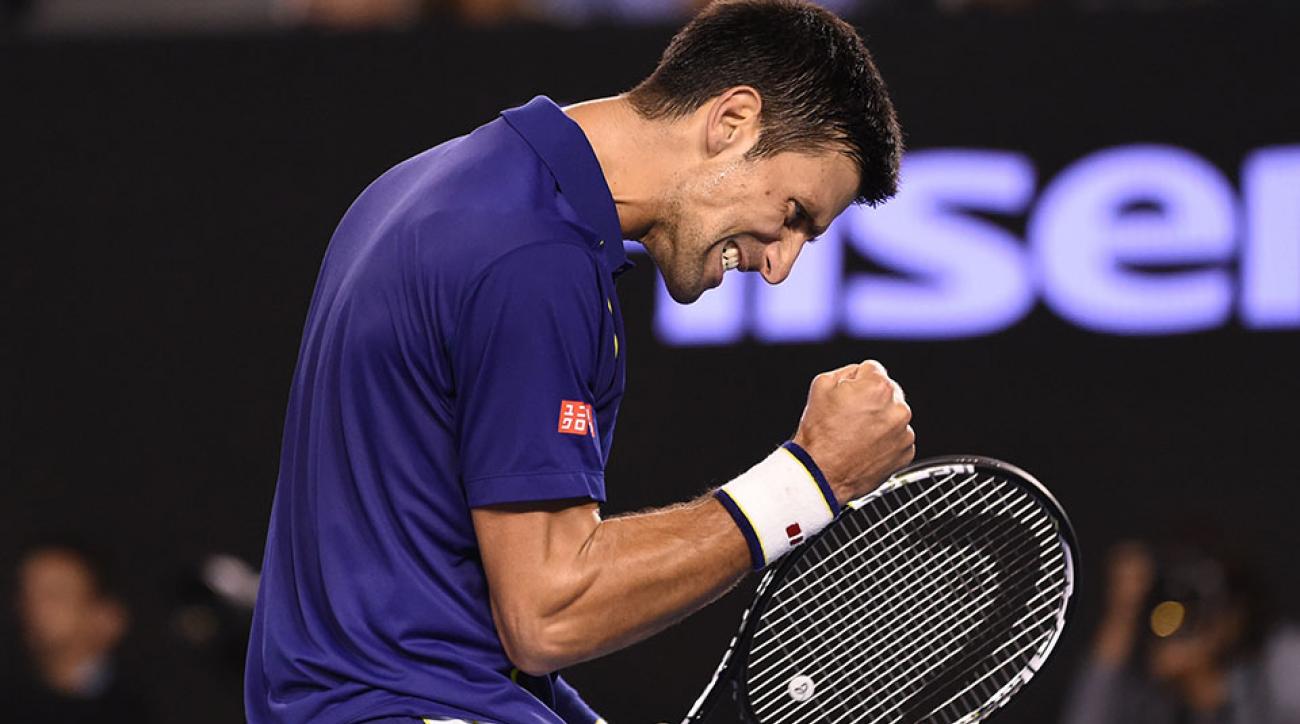
This is a tricky one as in some cases, the person may be introvert by nature. For these folks, showing emotions like raising that fist and screaming "come on!", doesn't come out easily if it ever does.
That said, let's not confuse being an introvert with lacking the desire to improve and fight through adversity. There are a lot of withdrawn players out there who may seem shy but who will fight tooth and nail for every point.
The best way to foster competitiveness in an individual is to reward actions rather than end results. In tennis, it is extremely important to value the amount of effort players are putting into their training and competitions.
Unfortunately, a lot of mentors, coaches and parents emphasize winning a lot and do not remind their pupils enough that at the end of the day, what really matters is giving it our best shot, nothing more, nothing less.
Emphasizing winning as the end goal only puts unnecessary pressure and stress. Let's think about it for a second: why do we feel pressured when we think about winning? If we think deep enough, we will realize that the main reason is that we know in our subconscious that a match result doesn't solely depend on us. It also depends on the level of our opponent. This means that there is a component that we can not control and that is how our opponent plays in relation to how well we can play. If your opponent is superior in most aspects of the game, winning the match will probably not happen no matter how bad you want it no matter how hard you try because simply, there is a significant gap in skill level.
With that being said, what would happen if, instead of thinking about winning, we rather, focus on playing our best? All of the sudden, all the pressure goes off because we and we only can control how we play. There are no unknown or uncertain variables like the level of our opponent. All external variables fade away leaving us with one task only: trying to play our best and sustain it throughout the match. Winning or losing a match becomes something that will enforce itself at the end as a natural result of combining our performance level with that of our opponent. Simply put: the better player will almost every time get the win.
Fostering this psychological pattern enforces competitiveness as the player's mind becomes clearer and more focused on playing own best and being alright with whatever outcome the match may bring, be it a win or a loss. The player understands and becomes comfortable with the idea of losing the match if despite all efforts, opponent was better. The loss becomes then an opportunity to detect areas of improvement rather than a source of frustration and sadness .
That said, let's not confuse being an introvert with lacking the desire to improve and fight through adversity. There are a lot of withdrawn players out there who may seem shy but who will fight tooth and nail for every point.
The best way to foster competitiveness in an individual is to reward actions rather than end results. In tennis, it is extremely important to value the amount of effort players are putting into their training and competitions.
Unfortunately, a lot of mentors, coaches and parents emphasize winning a lot and do not remind their pupils enough that at the end of the day, what really matters is giving it our best shot, nothing more, nothing less.
Emphasizing winning as the end goal only puts unnecessary pressure and stress. Let's think about it for a second: why do we feel pressured when we think about winning? If we think deep enough, we will realize that the main reason is that we know in our subconscious that a match result doesn't solely depend on us. It also depends on the level of our opponent. This means that there is a component that we can not control and that is how our opponent plays in relation to how well we can play. If your opponent is superior in most aspects of the game, winning the match will probably not happen no matter how bad you want it no matter how hard you try because simply, there is a significant gap in skill level.
With that being said, what would happen if, instead of thinking about winning, we rather, focus on playing our best? All of the sudden, all the pressure goes off because we and we only can control how we play. There are no unknown or uncertain variables like the level of our opponent. All external variables fade away leaving us with one task only: trying to play our best and sustain it throughout the match. Winning or losing a match becomes something that will enforce itself at the end as a natural result of combining our performance level with that of our opponent. Simply put: the better player will almost every time get the win.
Fostering this psychological pattern enforces competitiveness as the player's mind becomes clearer and more focused on playing own best and being alright with whatever outcome the match may bring, be it a win or a loss. The player understands and becomes comfortable with the idea of losing the match if despite all efforts, opponent was better. The loss becomes then an opportunity to detect areas of improvement rather than a source of frustration and sadness .
Calmness
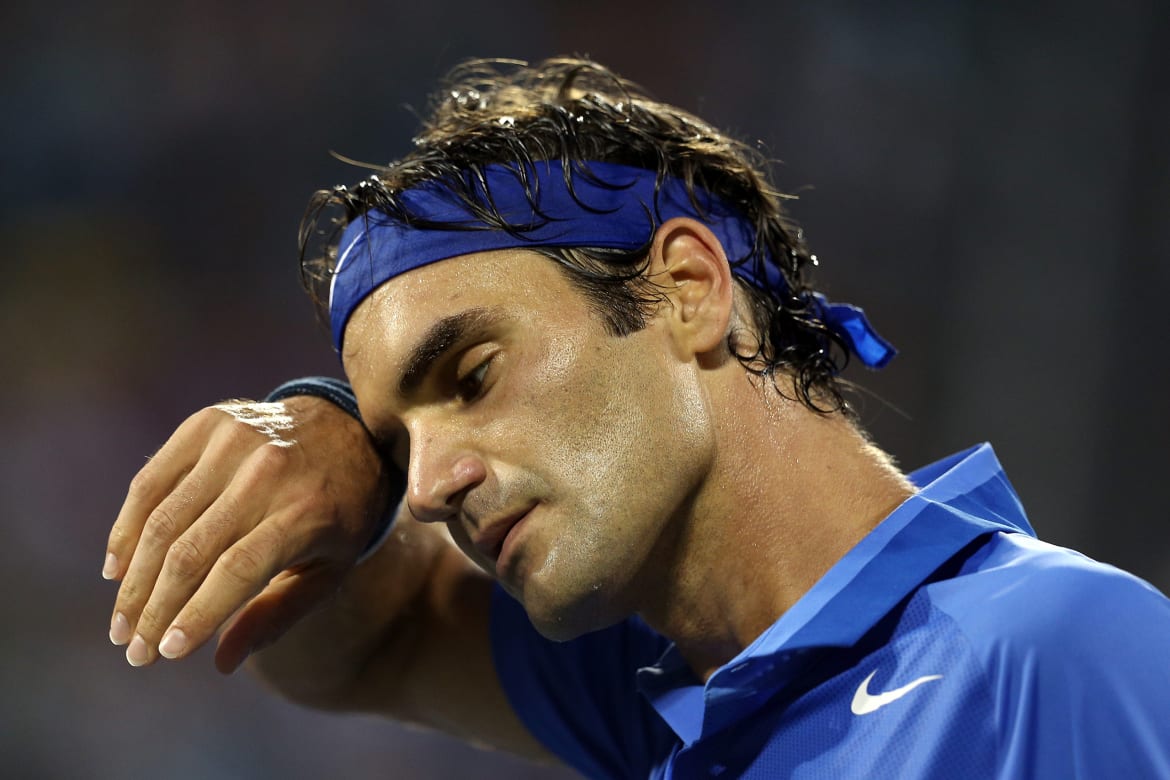
Remaining calm allows us to remain lucid and lucidity is crucial when it comes to making good decisions.
It's mind-boggling when we think about all the tiny decisions that we make either in training or competition. Every little tiny adjustment that we make has the potential to change the anatomy of our game and make/break our ability to "feel" a particular tennis stroke.
Additionally, we last longer physically when we are calmer, we breath better, we recover better, we think better. It's physiological. Conversely, stress and agitation consume energy at a faster rate, affecting player endurance significantly.
But there is a catch: we should not mix calmness with sloppiness. Being calm doesn't mean not fighting tooth and nail for every point. Being calm doesn't mean not being energetic and emotionless.
Calmness must never interfere with the other 3C's. A player must keep concentration, confidence and competitiveness sharp while staying calm, especially when things don't go as expected. Let's dig a bit deeper, there are actually two types of calmness: between points and during actual play.
Calmness between points often means focusing on breathing to decrease heart rate in preparation for the next point. Screaming and cursing between points or not taking enough time to reboot mentally and physically for the next point are common mistakes.
Calmness during actual play means not rushing for winners, accepting the fight and being patient until a good opportunity presents itself. A lot of unforced errors happen because of the urge of shortening a rally by scoring a winner. Unfortunately, the intention of scoring a winner almost always involves way too much risk, the player becomes hasty, aims unconsciously closer to the lines and hits a more flat shot in an attempt to make opponent run out of time. All this translates more often than not into an unforced error, exactly the opposite of the initial goal.
It's mind-boggling when we think about all the tiny decisions that we make either in training or competition. Every little tiny adjustment that we make has the potential to change the anatomy of our game and make/break our ability to "feel" a particular tennis stroke.
Additionally, we last longer physically when we are calmer, we breath better, we recover better, we think better. It's physiological. Conversely, stress and agitation consume energy at a faster rate, affecting player endurance significantly.
But there is a catch: we should not mix calmness with sloppiness. Being calm doesn't mean not fighting tooth and nail for every point. Being calm doesn't mean not being energetic and emotionless.
Calmness must never interfere with the other 3C's. A player must keep concentration, confidence and competitiveness sharp while staying calm, especially when things don't go as expected. Let's dig a bit deeper, there are actually two types of calmness: between points and during actual play.
Calmness between points often means focusing on breathing to decrease heart rate in preparation for the next point. Screaming and cursing between points or not taking enough time to reboot mentally and physically for the next point are common mistakes.
Calmness during actual play means not rushing for winners, accepting the fight and being patient until a good opportunity presents itself. A lot of unforced errors happen because of the urge of shortening a rally by scoring a winner. Unfortunately, the intention of scoring a winner almost always involves way too much risk, the player becomes hasty, aims unconsciously closer to the lines and hits a more flat shot in an attempt to make opponent run out of time. All this translates more often than not into an unforced error, exactly the opposite of the initial goal.
In a Nutshell
Unable to locate Global Block

